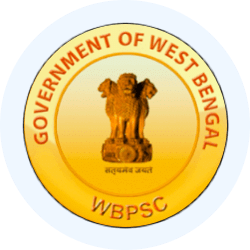District Profile of West Bengal - 1 | WBCS Preparation: All Subjects - WBCS (West Bengal) PDF Download
After gaining independence, West Bengal was established as a state with 14 districts. Over time, some districts merged, and others underwent bifurcation. Presently, West Bengal is organized into 23 districts across five divisions. This chapter provides essential information about these districts.
Post-independence in 1947, Bengal was divided based on religious lines, and the western part became West Bengal, while the eastern part joined Pakistan as East Pakistan, later becoming the independent nation of Bangladesh. Initially, West Bengal comprised 14 districts, including Bankura, Birbhum, Bardhaman, Kolkata, Darjeeling, Jalpaiguri, Hooghly, Howrah, Malda, Midnapore, Murshidabad, Nadia, West Dinajpur, and 24 Parganas.
Over time, West Bengal experienced changes in its district composition. In 1950, the princely state of Koch Bihar joined, and in 1954, the former French colony Chandannagore became part of Hooghly district. The States Reorganisation Act of 1956 led to the addition of Purulia district and the expansion of West Dinajpur. Subsequently, larger districts like West Dinajpur, Midnapore, and 24 Parganas underwent bifurcation. New districts such as Jhargram, Alipurduar, Kalimpong, and West Bardhaman were later formed.
Administrative Divisions
The state is currently divided into five divisions, each administered by a Divisional Commissioner. These divisions and their respective districts are:
Malda Division
- Malda district
- North Dinajpur district
- South Dinajpur district
- Murshidabad district
Bardhaman Division
- Birbhum district
- Hooghly district
- West Bardhaman district
- East Bardhaman district
Jalpaiguri Division
- Alipurduar district
- Cooch Behar district
- Darjeeling district
- Jalpaiguri district
- Kalimpong district
Presidency Division
- Howrah district
- Kolkata district
- Nadia district
- North 24 Parganas district
- South 24 Parganas district
Midnapore Division
- Bankura district
- Jhargram district
- Purulia district
- East Midnapore district
- West Midnapore district
Malda Division
Malda District
- Location and Boundaries
Malda Division, often referred to as the gateway of North Bengal, served as the capital of Gour-Banga. To the south lies Murshidabad, while to the north are North Dinajpur and South Dinajpur districts. The western boundary connects with Santhal Parganas of Jharkhand and Purnia of Bihar, and the eastern border extends to Bangladesh. Malda was incorporated into West Bengal on August 17, 1947. - Formation
Malda was included in West Bengal on 17th August, 1947 - Tourist Places
Malda boasts several historical tourist attractions, including Gour, Adina, Pandua, and Jagjinapur. Notable sites include Ramkeli, Baro Sona Mosque, Dakhil Darwaja, Firoz Minar Chamkati Masjid, Chika Mosque, Luko Churi, Kadam Rasul Mosque, Lattan Mosque, Kotwali Darwaja, and Gumti Darwaza in Gaur. Adina features Dear Park, Hamamghar, Turkey Bath Room, Pandab Dallan Minan, Atbart Dighi, and Adina Mosque. Other attractions include Qutubshahi Masjid, Eklakhi Mausoleum in Pandua, and the 9th-century Buddhist Vihara in Jagjivanpur.
The important statistical data of the district is as follows:
- Area : 3733 sq km
- Density : 1069
- Sex Ratio : 944
- Proportion to West Bengal : 4.37%
- Literacy Rate : 64.73%
- Population : 39,888,45 (Census 2011)
- Child Sex Ratio (0-6 Age)
- Population Growth : 21.22%
North Dinajpur District
- Location and Boundaries
North Dinajpur is surrounded by Panchgarh, Thakurgaon, and Kishanganj, Purnia, Katihar districts of Bihar to the west, Darjeeling and Jalpaiguri districts to the north, and Malda and South Dinajpur districts to the south. Formed on April 1, 1992, by the division of Dinajpur district. - Formation
It was created on 1st April, 1992 by the division of Dinajpur district. - Tourist Places
The district features Raiganj Bird Sanctuary, attracting migratory birds. Other attractions include Sap Nikla Forest, Temple of Goddess Bhairabi at Bindole, Museum and Park at Karnajora, Mosque of Burhana Fakirs, and Temple of Goddess Kali of Baira.
The important statatical data of the district is as follows:- Area : 3142 sq km
- Headquarters : Raiganj
- Density : 966
- Population : 30,07,134
- Sex Ratio : 939
- Literacy rate : 59.1%
South Dinajpur District
- Location and Boundaries
South Dinajpur is enclosed by North Dinajpur in the west, Malda district in the south, and Bangladesh in the north, east, and part of the south. Established on April 1, 1992, through the division of Dinajpur district. - Formation
It was created on 1st April, 1992 by the division of Dinajpur district. - Tourist Places
Notable tourist spots include Bangarh, known for its historical inscriptions, Hili (Indo-Bangladesh border), Sarongbari Forest, Dogachhi Forest, College Museum of Balurghat, Khanpur (Teabhaga Movement), Patiram Thankur Estate of Tagore family, Bolla Kali Temple, and Aira Forest.
The important statistical data of the district is as follows:
- Area : 2162 sq km
- Density : 750
- Population : 15,03,178
- Sex Ratio : 950
- Literacy Rate : 72.82%
Murshidabad District
- Location and Boundaries
Situated in the middle of West Bengal, Murshidabad shares borders with Malda district to the north, Jharkhand's Sahebganj and Pakur districts to the northwest, Birbhum to the west, East Bardhaman to the southwest, and Nadia district to the south. The eastern boundary forms an international border with Bangladesh's Rajshahi division. - Formation
Aurangzeb granted permission to Murshid Quli Khan to rename the town Muksudabad as Murshidabad in 1704. - Tourist Places
Once the capital of Bengal, Murshidabad is rich in historical sites, including Hazaarduari Palace, Moti Jhil, Murabagh Palace, Khushbagh Cemetery, Katra Masjid, Kathgola Gardens, Tripolia Gate, Nimak Haram Deori, Jafarganj Cemetery, Nasirpur Palace, Wasef Manzil, Bhavaniswar Mandir, Kiriteswar Mandir, Imambara, and the Tomb of Siraj-ud-Daula.
The important statistical data of the district is as follows:
- Area : 5316.11 sq km
- Density : 1334
- Population : 71,02,430
- Sex Ratio : 957
- Literacy Rate : 63.88%
|
77 videos|109 docs
|

|
Explore Courses for WBCS (West Bengal) exam
|

|
















